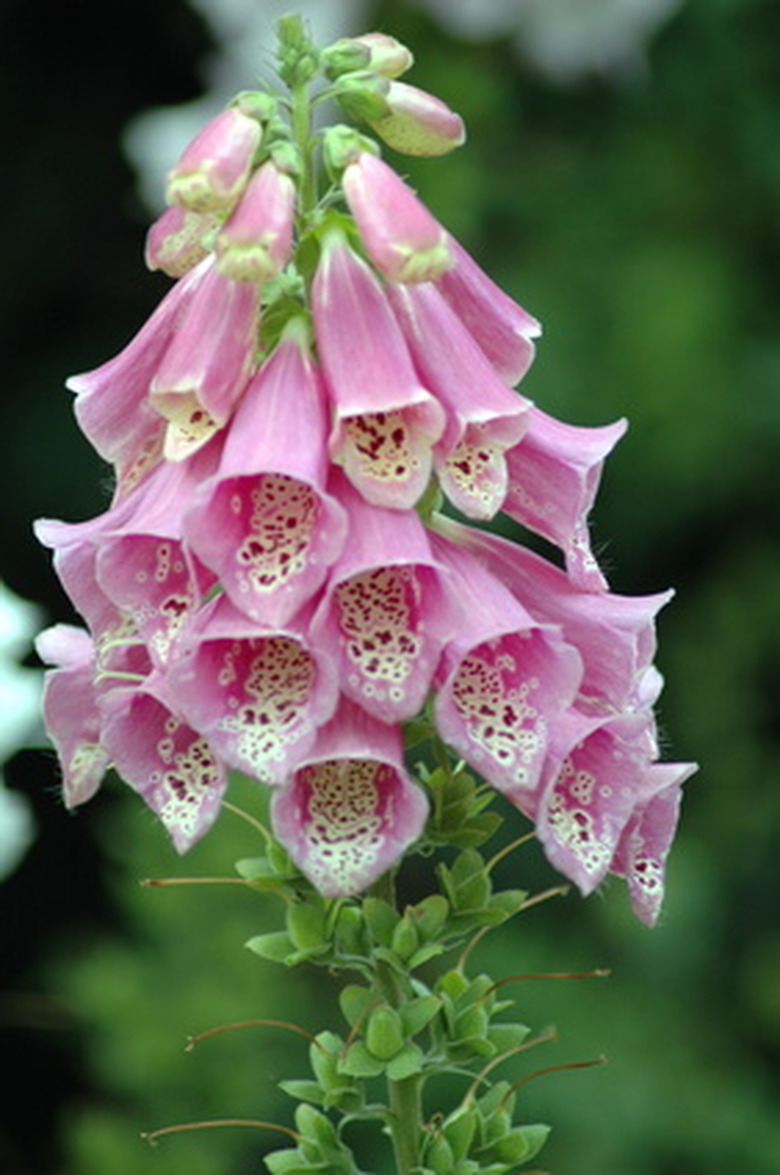How To Transplant Foxgloves
The foxglove is a striking flower with its tall spikes of pretty bells standing tall among the shorter plants. It has a history of medicinal uses and was highly regarded as a remedy for edema. You can find these springing up as weeds in some areas along roadsides where the seed has spread. With a little care, you can transplant them to your garden.
Step 1
Isolate the base of the plant from the other plants or weeds nearby by pushing back the leafy matter. Pull out surrounding weeds to make room for a shovel. Transplant foxglove that has not yet blossomed, as foxglove typically goes to seed and dies off in the second year.
- The foxglove is a striking flower with its tall spikes of pretty bells standing tall among the shorter plants.
Step 2
Dig straight down in a circle around the base of the plant, taking care not to damage the leaves. Cut your shovel in and under the plant, coming in from several angles and loosening the roots from the soil. Pry up the rootball from the soil.
Step 3
Lift the plant, keeping as much soil as possible around the roots. Place it into your garden where it will get partial shade, good drainage and fertile soil. The foxglove is hearty and will respond quickly to its new surroundings, especially if you move it during spring to early summer when the temperatures are not yet too hot.
Step 4
Water the plant and the soil surrounding its new location with 2 or 3 gallons of water immediately after planting. Keep a close eye on the plant for the first week to make sure the soil does not dry out. You should see sign of new growth within 10 to 12 days.
- Dig straight down in a circle around the base of the plant, taking care not to damage the leaves.
- Lift the plant, keeping as much soil as possible around the roots.
Transplant Foxgloves
Prepare a planting spot in sun or light shade. Dig in 2 to 4 inches of manure or compost. Repeat at several points around the perimeter of the plant. Once the roots are loose, lift the plant from the ground, along with the attached soil. Make the hole at least two or three times the width of the plant's roots. Place the foxglove and attached clump of soil in the hole. Planting too deeply often causes the roots to rot. Don't compress the soil, as doing so prevents air from circulating around the roots. Water the foxglove immediately, and then keep the soil damp until the plant shows healthy new growth indicating that the roots are established. Mulch and compost keep the roots cool and moist, and also enriches the soil.
- Prepare a planting spot in sun or light shade.
- Mulch and compost keep the roots cool and moist, and also enriches the soil.
Things Needed
- Shovel
- Garden gloves
- Bucket
- Water
Warning
All parts of the foxglove are toxic and should not be ingested. Wear gloves when handling foxgloves to prevent dermatitis.
References
- University of California: Marin County Extension: Foxglove Offers a Spectacular Display
- Washington State University: Common Foxglove
- University of California Marin Master Gardeners: Foxglove Offers a Spectacular Display
- Cornell University Extension: Foxglove
- Oregon State University Extension: Perennials: How to Dig and Divide!
- University of Minnesota Sustainable Urban Landscape Series: Dividing Perennials
- National Gardening Association: Plant Care Guides, Foxglove
